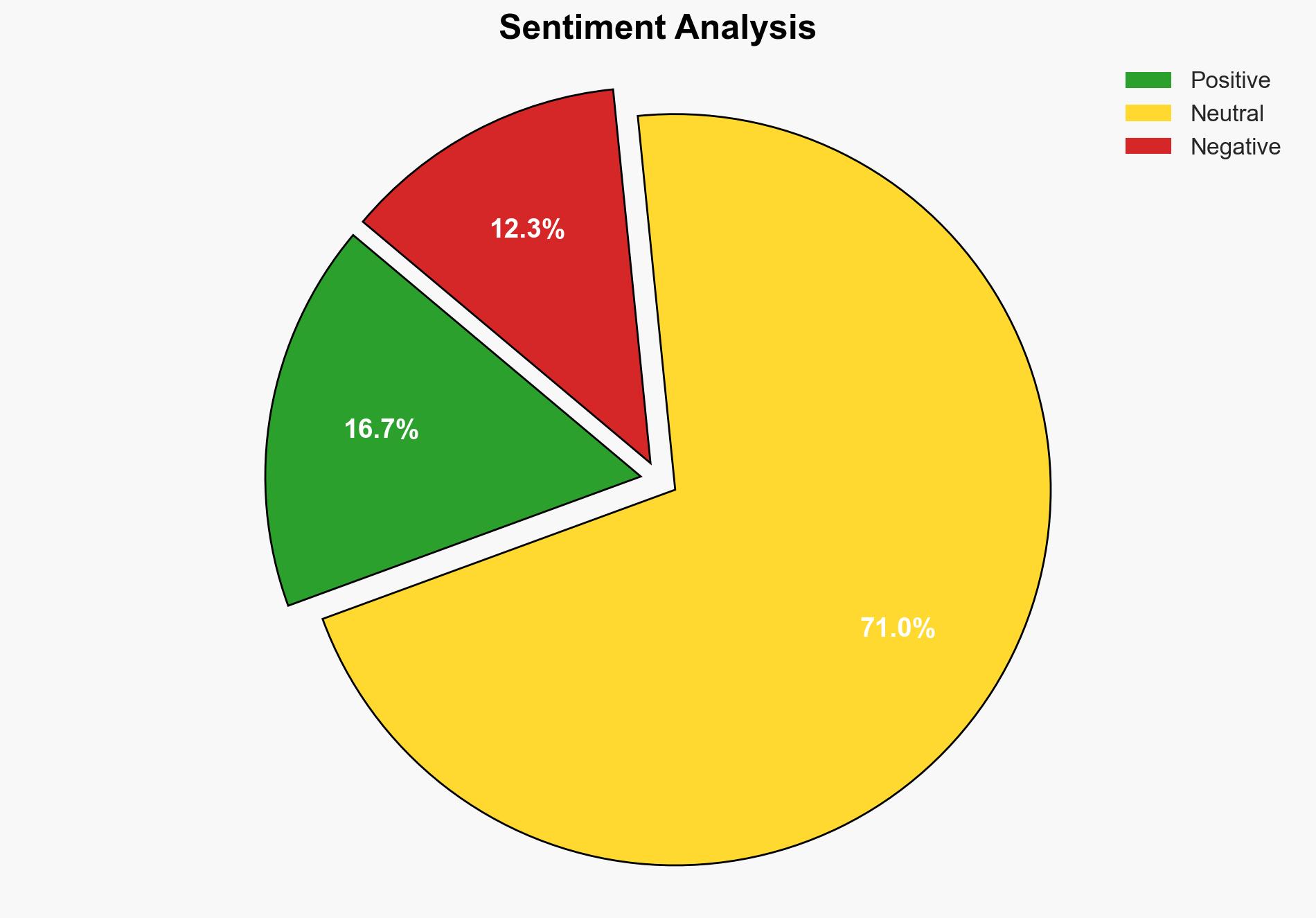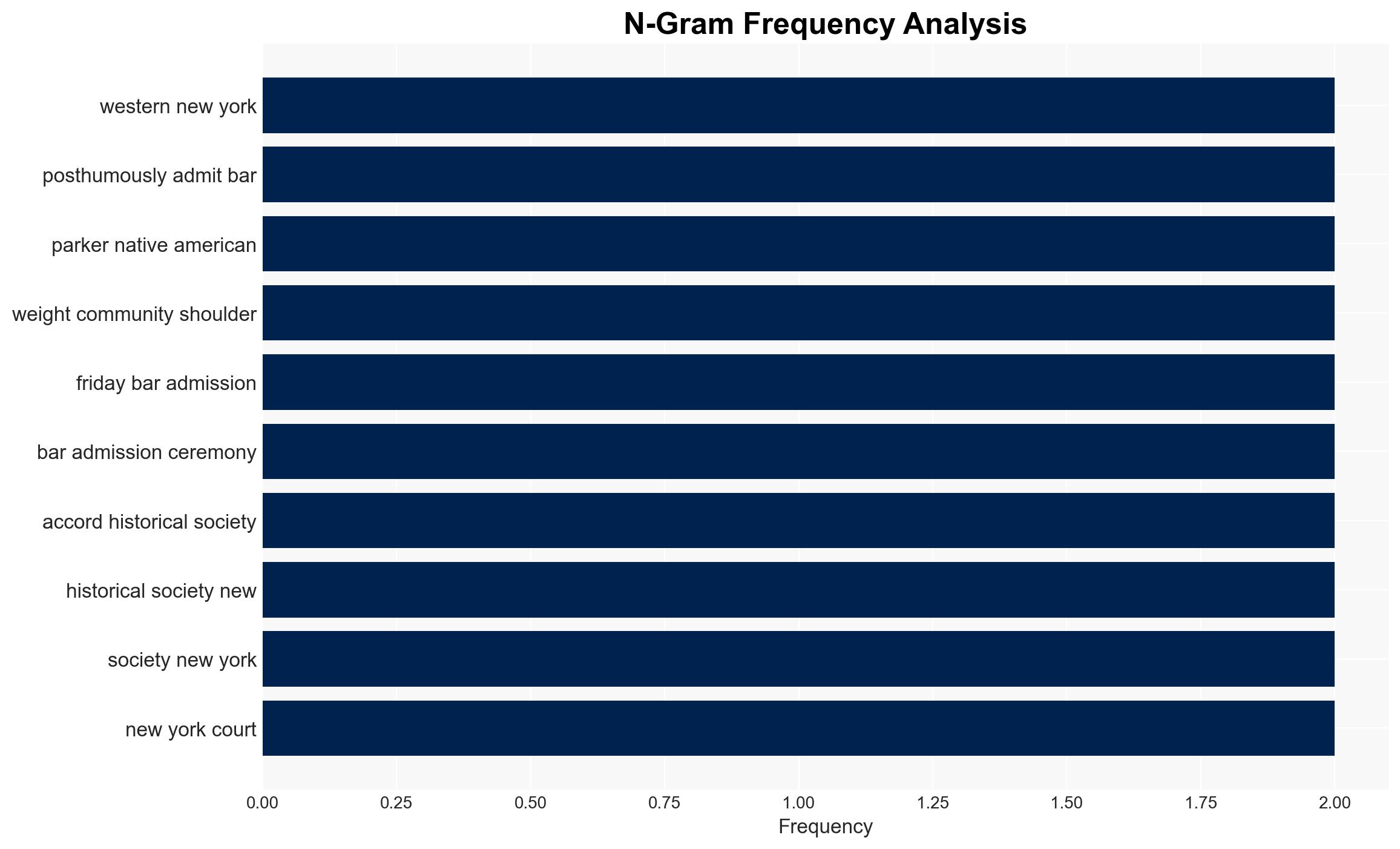A Native American leader who enlisted in the Union Army has been posthumously admitted to the New York bar after 176 years – CNN
Published on: 2025-11-15
AI-powered OSINT brief from verified open sources. Automated NLP signal extraction with human verification. See our Methodology and Why WorldWideWatchers.
Intelligence Report:
1. BLUF (Bottom Line Up Front)
The posthumous admission of Ely Parker, a Native American leader, to the New York bar symbolizes a significant step towards rectifying historical injustices against Native Americans. This event may influence broader societal recognition and policy changes regarding Native American rights. Confidence Level: Moderate. Recommended action includes monitoring subsequent legal and social movements for further shifts in Native American rights and representation.
2. Competing Hypotheses
Hypothesis 1: The posthumous admission of Ely Parker is primarily symbolic, with limited immediate impact on Native American rights and legal status.
Hypothesis 2: This event marks a pivotal moment that will catalyze further legal and social reforms benefiting Native American communities.
Assessment: Hypothesis 2 is more likely given the current socio-political climate that increasingly favors addressing historical injustices and promoting diversity and inclusion. However, the impact will depend on subsequent actions by legal and governmental institutions.
3. Key Assumptions and Red Flags
Assumptions: It is assumed that the symbolic nature of this event will translate into tangible legal and social changes. There is also an assumption that the broader public and political entities will support such changes.
Red Flags: Potential resistance from entities opposed to altering the status quo regarding Native American rights. The possibility of this event being used as a token gesture without substantive follow-up actions.
4. Implications and Strategic Risks
The recognition of Ely Parker could inspire similar initiatives across other states, potentially leading to a reevaluation of Native American legal rights. However, there is a risk of backlash from groups resistant to change, which could manifest in political or informational campaigns undermining these efforts. Failure to capitalize on this momentum could result in missed opportunities for meaningful reform.
5. Recommendations and Outlook
- Monitor legal and policy developments related to Native American rights in the aftermath of this event.
- Engage with Native American communities to understand their perspectives and support their initiatives.
- Best-case scenario: This event leads to comprehensive legal reforms and improved socio-economic conditions for Native Americans.
- Worst-case scenario: The event remains symbolic, with no substantial follow-up actions, leading to disillusionment among Native American communities.
- Most-likely scenario: Incremental changes occur, with increased awareness and gradual policy shifts over time.
6. Key Individuals and Entities
Ely Parker, Ulysses Grant, William Seward, Joseph Genetin-Pilawa, Melissa Parker Leonard, Justice Gerald Whalen.
7. Thematic Tags
National Security Threats, Native American Rights, Historical Justice, Legal Reforms
Structured Analytic Techniques Applied
- Cognitive Bias Stress Test: Expose and correct potential biases in assessments through red-teaming and structured challenge.
- Bayesian Scenario Modeling: Use probabilistic forecasting for conflict trajectories or escalation likelihood.
- Network Influence Mapping: Map relationships between state and non-state actors for impact estimation.
Explore more:
National Security Threats Briefs ·
Daily Summary ·
Support us
·





